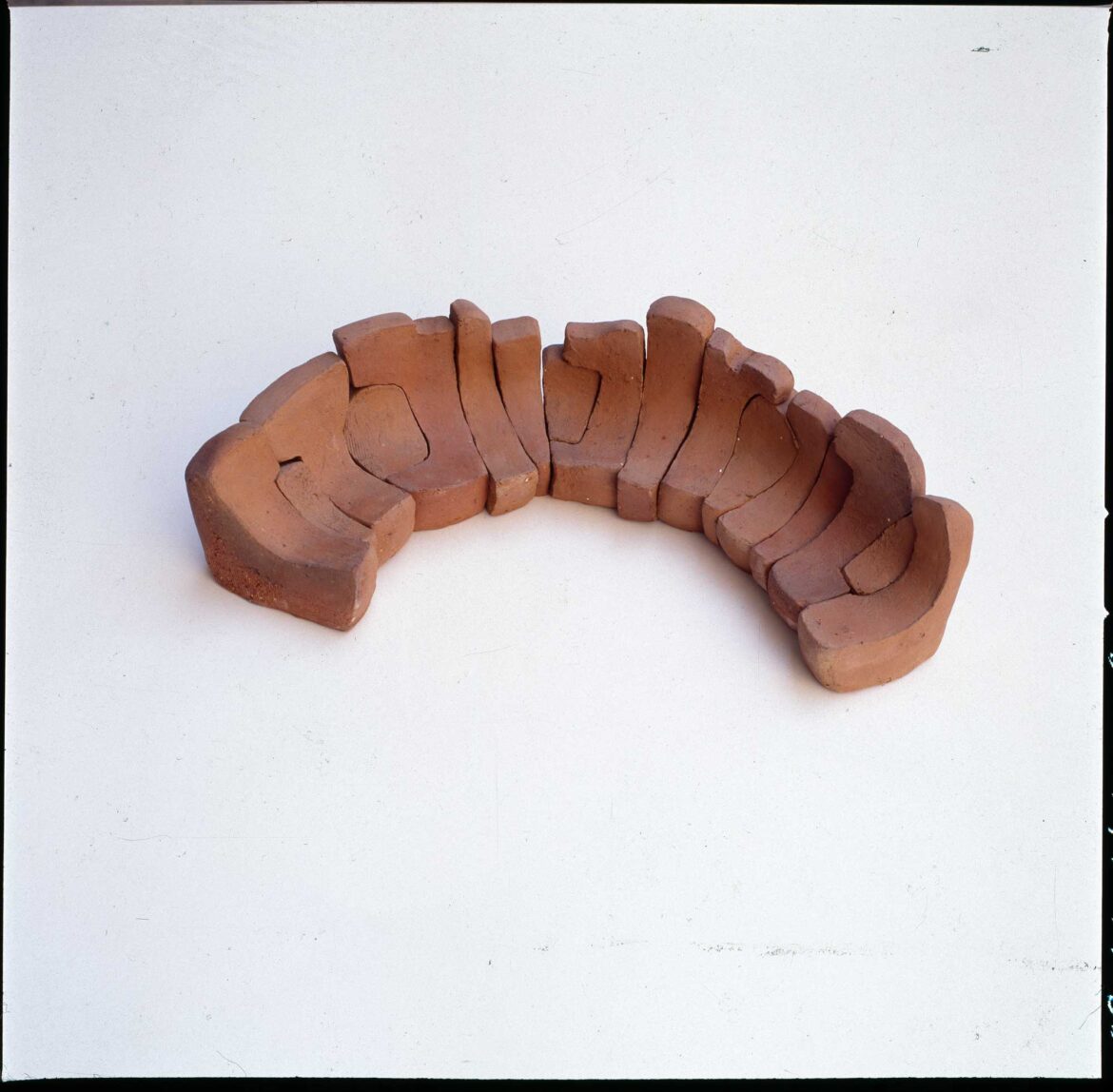Choucair’s Silent Assembly
Encountering Work by Saloua Raouda Choucair
November 2019
Moments with Saloua Raouda Choucair’s sculptures are when I want to possess art. Not so much own it as hold it—without compunction, cupping its edges, its oils interacting with mine, and discovering which parts come loose and which stay together. Nearly every sculpture of hers I’ve encountered is kept under Plexiglas, a doublespeak insult to the assemblies Choucair staged.
Choucair’s sculptures reveal their luscious parts, usually made of wood or formed from a cast. Held together by gravity, the parts perform constellations. They’re like written words made of signs and letters, that when placed together change shape, and then meaning. Choucair’s sculptures are letters made into poems. They are vocabularies and cities. They are as organic as they are mechanic. Letterpresses once mimicked human gestures; then gestures mimicked letterpresses. Whether the letter q, or the aleph, every character we write or type today is shaped through an exchange between hands and machines. I visualize the ampersand only as forged in steel.
Choucair bristled at what the Western critics ask about “Islamic” art: is it allowed to show the human body? In response she proved how the world is assembled and how its particles, even its human bodies, are never irreducible. Like spoken words, or even untranscribed sounds, her work exists only because an entire universe does.
My friend made a book about Choucair’s work. Flipping through the pages, she wanted to show me a project she knew I didn’t know. The flipping stopped at a kissing, merging family of terra-cottas fired in a kiln. It’s a maquette for a bench, she said. Choucair’s baked concoction—stripped of context and scale—looked like a denture made for the lower jaw. Its teeth resembled more a forest bed’s symbiotic complexity than the machinic columnarity of a human jaw.
If the denture changes into a bench, then one sits along the inner ledge where the tongue rests, when it’s not employed to speak or to taste or to lick. When things have settled down, when one has a moment to think about how we got here.
The next page my friend turned to showed a photograph of a place where Choucair’s denture got built—its mandible though snapped in two—within a Beirut district destroyed by war before it was devastated by real estate. The developer Solidere built the bench in the late 1990s, just as the last voices opposing the company turned complacent. Artists, designers, and architects were by then complicit in the vanquishing of Beirut.
Today, if only for an interlude, Choucair’s ledge offers respite in a Beirut district no longer dead. People are in the streets nearby. Singing songs and sharing chants that abstain from clear demands. No one dares yet say where these demonstrations are heading. There is a kind of silence. An abeyance.
A plan takes time before taking shape.
Silence is a ledge. It’s a bed for transforming, for letting shapes make room for each other, for feeling out how we fit together. It’s the breath before pulverizing the Plexiglas that swore transparency while it sliced deep the cleft between us.
Published in Expansions, Hashim Sarkis and Ala Tannis (eds.), 2021.
